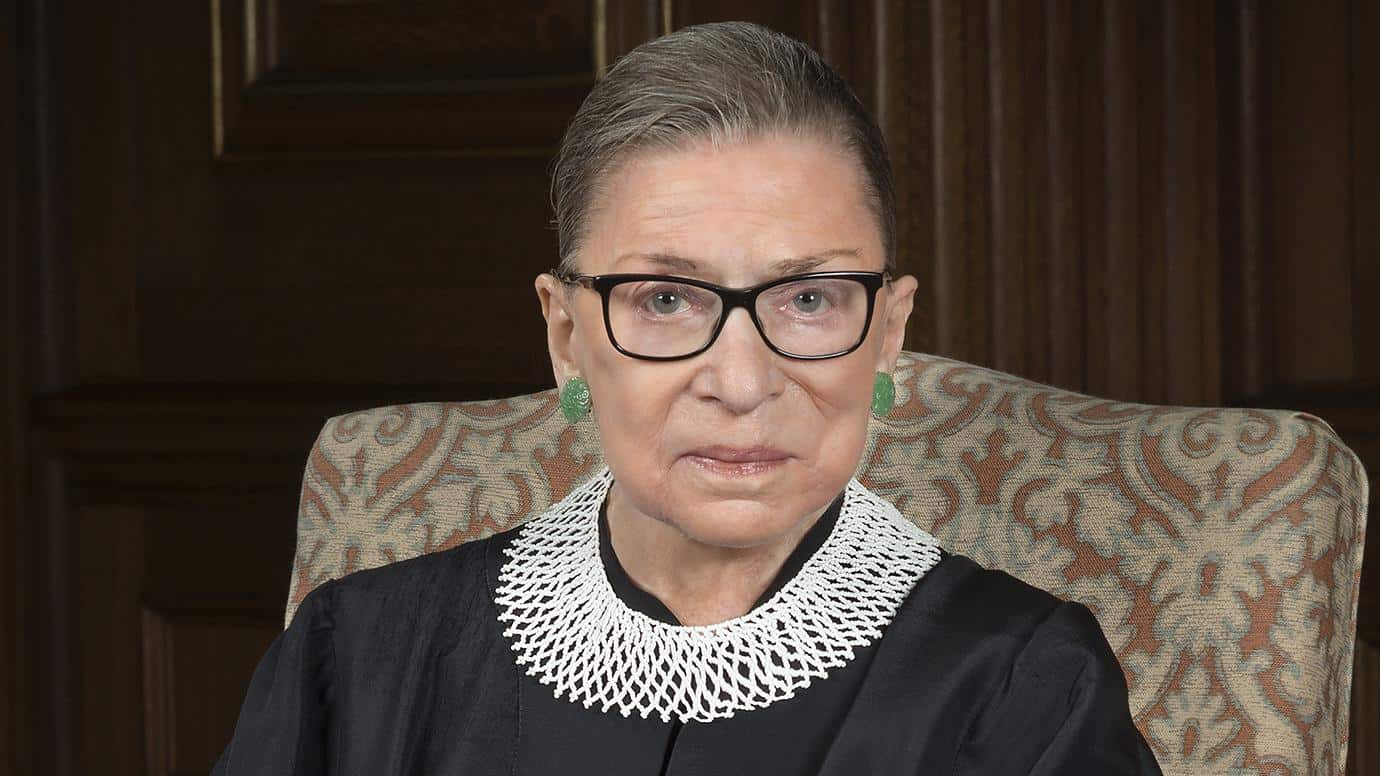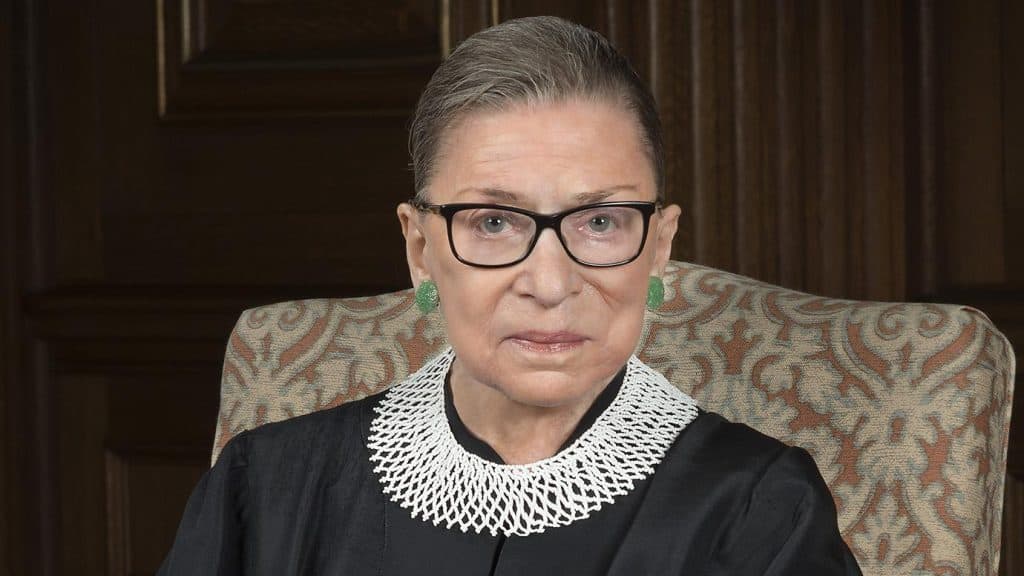
Remembering RBG
 (photo credit: Supreme Court Collection)
(photo credit: Supreme Court Collection)
The first time I met Ruth Bader Ginsburg was in 1986 at a glorious dinner honoring her husband Marty who was a tax law professor at Georgetown Law Center, my law school alma mater where I was then working as the assistant dean for development. The evening at the Ritz Carlton (back when it was on Massachusetts Avenue) was to announce the establishment of the Martin Ginsburg Chair in Tax Law at Georgetown funded by Marty’s very grateful client, a business titan by the name of Ross Perot (years later, an unsuccessful third party candidate for U.S. president). As the story goes, Marty did some tax law work for Ross in the General Motors’ acquisition of Perot’s company EDS and the business titan was so grateful he established the chair (which Marty never held, it remained vacant until his death in 2010.)
Marty was an absolutely delightful person, always seeming in good humor, terrifyingly smart but not one to make others feel less so. He was also renowned for his recipes and real joy in preparing delicious meals for friends.
(photo credit: Supreme Court Photo Collection in People Magazine)
That night, when the Ginsburgs arrived at the banquet, the entire Ritz Carlton ballroom was filled with Georgetown law faculty and spouses, Dean Bob Pitofsky and Georgetown President Father Tim Healy, and of course Perot and his entourage. But everyone wanted to say hello to Ruth Bader Ginsburg, then a judge on the U.S. Court of Appeals for the District of Columbia. For me, meeting Ross Perot that day (he stopped by the ballroom in the afternoon to review the place settings and centerpieces!) was a big deal — but meeting Judge Ginsburg was dazzling. Her reputation as a champion for women’s rights made her an icon for so many of us at the law school. I had heard so much about her I was nervous about meeting her, but I soon realized she was so warm and pleasant, albeit as shy as Marty was outgoing.
Ruth Bader Ginsburg and the women of her generation — largely the first women in law schools nationwide — truly did blaze trails for the rest of us who reaped so many benefits from those pioneers. My class at Georgetown in 1974-1977 was about 25% women and we also confronted many barriers, though more subtle than the first generation. Truth be told, we all faced our bitter moments of sex discrimination at work. I can still hear a boss explaining why he hired an older male to fill a position one step above my own at a much higher salary while begging me not to quit: “We need a graybeard,” said my boss, a phrase that still stings nearly 40 years later, “but you can do this work far better than he can.” That kind of workplace discrimination continues even to this day, but thanks to Justice Ginsburg and other women’s rights advocates like her, women have many more remedies available than we had back then.
I left Georgetown in 1989 to become Trinity’s president but had the good fortune to return from time to time for various occasions including in 2001 the 50th Anniversary of women’s admission to Georgetown Law (yes, a big deal…!). Justice Ginsburg, who was appointed to the Supreme Court in 1993 by President Bill Clinton, spoke at one of these occasions. I was captivated listening to her personal story of confronting discrimination early in her career and eventually triumphing over the ingrained sexist attitudes that originally barred her from employment because she was a woman, a Jewish woman, a Jewish woman who was also a mother. She was a hero for women trying to figure out how to make our way in a world often hostile to our gender, our tendency to have children, our desire to balance work and family, our life choices. Over the years I heard her speak many times, most recently at a Women’s Forum dinner a year or two ago at the Supreme Court. Her message was always consistent — we must persist even more ardently in the quest for equality and justice.
I reflect often on the fact that we are not really that far along in reaching a level playing field — all I need to do is look around in a room full of college presidents, or business executives, or a board room at a for-profit company and I can see that while women have made some progress, we still live in an age where, “Well, we have one…” is considered enough. True for women, even more true for Black and Latino women and men. Justice Ginsburg famously said, “When I’m sometimes asked ‘When will there be enough [women on the Supreme Court]?’ and I say ‘When there are nine,’ people are shocked. But there’d been nine men, and nobody’s ever raised a question about that.”
At some level it may seem hard to fathom in the Year 2020 that Ruth Bader Ginsburg was only the second woman in American history to make it to the Supreme Court, and that was in 1993, more than 200 years into our republic, joining the first woman justice, the great Justice Sandra Day O’Connor, now retired, who was appointed by President Reagan in 1981. Two other women followed Ginsburg, both appointees of President Obama — Justices Sonia Sotomayor in 2009 and Elena Kagan in 2010. But then we also realize that no woman has ever been president or vice president of the United States, and only four women have ever even been nominated for those positions. We are so proud that a Trinity Woman, Nancy Pelosi ’63, is the highest ranking elected woman in American History now serving her second stint as Speaker of the House of the United States, but Speaker Pelosi always says, “We have made history, but now we must make progress!”
Progress is now the concern of so many Americans, women and men, as right wing ideologues threaten to use the vacancy created by Justice Ginsburg’s death to get a new justice appointed who will swing the Supreme Court majority toward rolling back women’s rights, civil rights, human rights across a range of issues. President Trump on Saturday claimed that he would nominate a woman for the open seat, but we must not let biology alone be the standard — a woman who votes against progress for women, for African Americans, for LGBTQ citizens, for those who are impoverished, for those who depend on the Affordable Care Act to cover their healthcare needs — a woman who does not uphold and advance the progress already made is not the kind of successor that America needs right now. Aside from dishonoring and dismantling Justice Ginsburg’s legacy, a hasty political appointment rammed through in the heat of this election year will further rupture the social compact of this nation, already stressed and showing real fractures. A genuinely wise leader concerned about the entire nation would at the very least respect the timetable (and the history his own party made in 2016 in refusing to move President Obama’s nominee forward in an election year) if not the substance of Justice Ginsburg’s legacy.
Marty Ginsburg’s death in 2010 was a huge loss for Ruth; but she kept going despite her grief, her ongoing battle with recurring cancer and other illnesses. In the national outpouring of grief this past weekend upon receiving the news of Justice Ginsburg’s death, many have commented that perhaps we expected too much of her, that resting the weight of the future of justice for all in this country on her tiny shoulders was somehow unfair. I think she’d hate that idea. She would surely reply, in her measured but firm way, that she made her own life choices; that she chose her own pathway and accepted the burdens it imposed. And she would also remind us that accepting the burdens is the price we must be willing to pay for equality and freedom — those precious gifts that demand our utmost stewardship and accountability to enlarge them for future generations.
The best, most urgent, thing we can do to honor the legacy of Justice Ginsburg is to pick up her torch and run with it, not in a little while, not after things settle down — NOW. There’s no time to lose. Let’s get going!

1 Comment